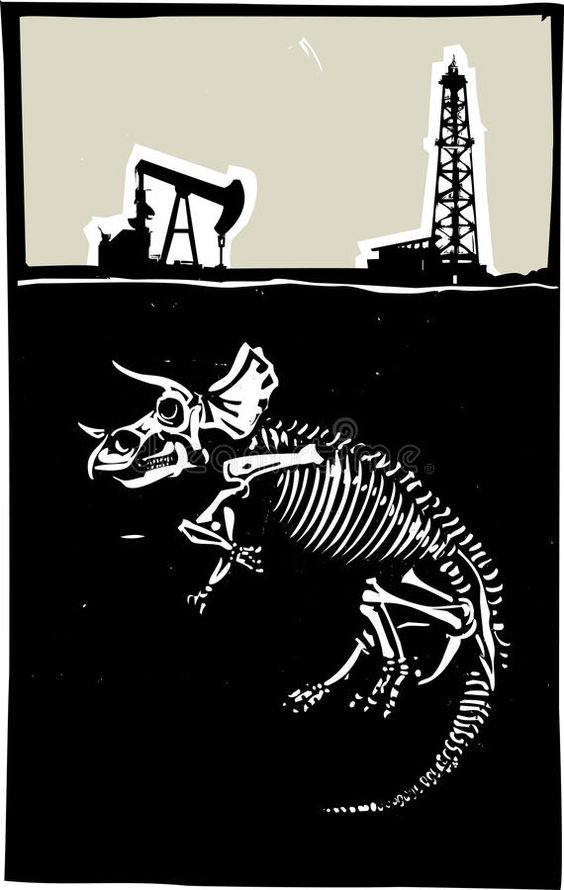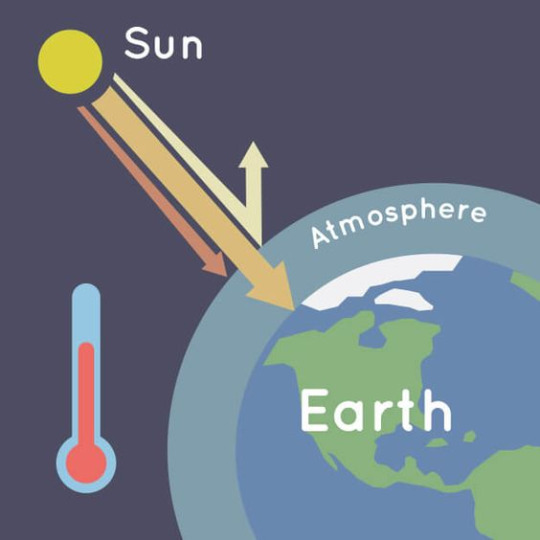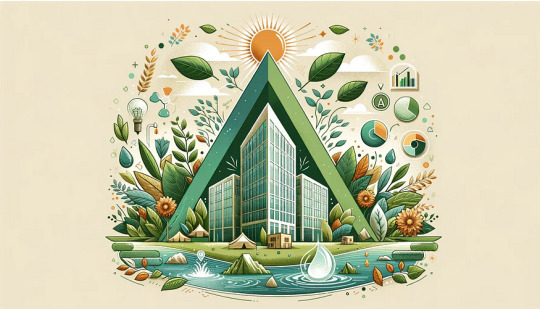#footprint reduction
Text
Evoort Solutions | Sustainability Solutions
Evoort Solutions is a leading sustainability solutions provider that helps businesses reduce their environmental impact.
At Evoort Solutions, we offer comprehensive Sustainability Solutions to help organizations embrace sustainable practices, reduce their environmental footprint, and achieve their sustainability goals. Our services cover areas such as energy management, carbon footprint analysis, waste management, and sustainability reporting.

#sustainability#sustainability solutions#environmental solutions#ESG#ESG compliance#footprint reduction#waste management#energy management#footprint analysis#environmental footprint
0 notes
Text
#good news#environmentalism#science#environment#green cement#cement#architecture#construction#carbon emissions#co2 reduction#carbon footprint
106 notes
·
View notes
Text
Malcesine: Enchantment Between Lake and Mountain
Nestled between the crystal-clear waters of Lake Garda and the imposing peaks of Monte Baldo, Malcesine captivates visitors with its timeless beauty. This medieval town, with its cobblestone streets, ancient buildings, and breathtaking views, offers a perfect mix of history, nature, and culture.
A Journey Through History
The historical heart of Malcesine is dominated by the Scaliger Castle, a…

View On WordPress
#adventure#air quality improvement#antiques#architecture#Art#biking#biodiversity#biodiversity preservation#birdwatching#botanicalgardens#budgettravel#cafes#camping#carbon footprint reduction#castles#clean energy#climate action#climatechange#conservation#conservation efforts#conservation technology#craftsmanship#culture#drawing#eco-awareness#eco-conscious choices#eco-conscious living#eco-friendly#eco-friendly alternatives#eco-friendly habits
2 notes
·
View notes
Text
Impact of Construction and Demolition Waste and its Use in Buildings
Introduction
Construction and demolition (C&D) waste is a significant environmental concern worldwide. The massive amounts of waste generated from construction and demolition activities pose a threat to the environment and human health. However, innovative approaches have emerged to tackle this issue, focusing on recycling and reusing C&D waste in building projects. This article explores the…

View On WordPress
#building construction#C&D waste#carbon footprint#circular economy#Construction and demolition waste#construction industry#environmental challenges#environmental impact#green building#green building certifications#landfill reduction#quality control#recycled materials#recycling#resource conservation#resource efficiency#reuse#standardized regulations#sustainable practices#sustainable waste management#technical limitations#waste management
2 notes
·
View notes
Text
Just a reminder: to limit global temperature rise to 1.5C, humans need to halve our carbon dioxide emissions from fossil fuels by 2030.
That means, halve the usage by buildings you live and work in. Halve the emissions from your gasoline/petrol car (hello public transit). Halve the emissions from the food you eat (reduce food waste, eat more plants). Halve the electricity generated from non-renewable sources. Halve the things you buy (reduce, reuse) or make sure that what you do buy has half the carbon footprint (recycle recycle recycle).

#reduce reuse recycle#in that order#sustainability#climate change#I work in this industry#I'm on here to be a fucking pain in the ass about it#greenhouse gas emissions#reduction target 2030#carbon dioxide#carbon dioxide emissions#footprint#carbon footprint#I'm purposefully simplifying some things#come on it's a Tumblr post#short and sweet is better we can't all be bunjywunjy#I aspire to that level of greatness#my posts
3 notes
·
View notes
Text
Carbon Offset Subscription | Olive Gaea
Your Go-To Platform for Carbon Neutrality

If you value budget efficiency while also ensuring that your lifestyle is in accordance with a liveable climate, go for carbon offset subscription.
Calculate your carbon footprint or just go with the national average.
If you want to learn more read our Frequently Asked Questions (FAQs).
#Carbon Offset#Carbon Neutrality#Carbon Footprint Reduction#Carbon Offset Subscription#Carbon Offsetting in UAE
6 notes
·
View notes
Text
L'empreinte carbone
What is a Carbon Footprint?
In simple terms, your carbon footprint is the amount of carbon dioxide released into the Earth's atmosphere as a result of human activities, rather than any natural emissions. We produce carbon dioxide through a lot of different actions, such as using electricity, transport, clothes, food, and even throwing out trash! All of this carbon is having a negative effect on the atmosphere, contributing to Global Warming.

We can think of our carbon footprint like any other kind of footprint - it is the trail of carbon dioxide we leave behind us during our daily lives. All of your actions and possessions add up to create your individual carbon footprint. If we actively try to lower our carbon footprint, we can have a positive impact on carbon emissions by cutting the amount of CO2 we produce.

Carbon Footprints can be thought of in a number of different ways. We often talk about carbon footprints of one individual, but you can also think about the carbon footprint of a business, state, or country as a whole.
What makes up your Carbon Footprint?
Any action, item, or process that involves any fuel to be burned will produce some carbon that is added to the atmosphere. This could be anything from taking a long-haul flight to eating a cheeseburger and some fries.
Most things require some amount of carbon to be produced, but the amount of carbon created varies between each item and action. Here are a few of the most common contributors:
Transport:
There are many different types of transport, and some produce more carbon than others. Fossil fuels burned for transportation creates the largest contribution of greenhouse gases to the U.S.'s carbon footprint.
One of the worst offenders for carbon emissions are airplanes, with each passenger contributing around 250 g of CO2 per kilometer. In fact, one return flight from New York to London produces 986kg of CO2 per passenger, more than the average person would use in a year from 56 countries around the globe, including Burundi and Paraguay!

Flights are closely followed by cars and other private transport modes, this is because the carbon emissions are shared between a very small group of people. On average, 404 g of CO2is produced per mile traveled in a light-duty vehicle, and with around 253 million light vehicles operating in the US, that's a lot of carbon dioxide!
However, some modes of transport do offer a less carbon-heavy way of traveling. Taking buses, trains, and trams typically have less of an impact as they are shared by lots of passengers. Car shares are also a good option as they move multiple people to the same place and divide up the emissions between them.
But the best mode of transport by far is to walk or cycle. These modes of transport contribute almost no carbon at all to the atmosphere, plus they can keep us fit and healthy too!

Electricity and Heat:
The second largest contributor to the U.S. carbon footprint is the production of electricity and heat from fossil fuels. This process fuels much of the things we use in our daily lives. From ovens to refrigerators, mobile phones to laptops, and lamps to speakers, all kinds of household items use electricity whenever we use them.

As well as the various gadgets and goods we use, we also use fossil fuels to heat and cool our homes. Whether you use electricity, gas, oil, coal, or even wood, the process of heating your home will normally produce a large amount of carbon emissions.
However, this is slowly changing as renewable and clean sources of energy are becoming more common. These energy sources produce no carbon dioxide once they are set up, and can sometimes be cheaper to use too!
Food:
Food production and transportation contributes to around one quarter of the world's carbon emissions. While transportation of our food does contribute carbon emissions, it is often the farming processes and land required to produce our food that has the largest impact.

Some of the foods with the largest carbon emissions are items such as meat and dairy, as the animals used to produce them use up a lot of food, care, water, and land. Other foods that have bad carbon records include things like coffee and chocolate, often because land is being cleared to produce them, which causes more carbon to enter the atmosphere.
Why are carbon emissions bad for the environment?
Carbon dioxide is just one of a number of greenhouse gases that can be found in our atmosphere, alongside things like methane, water vapor, nitrous oxide, and ozone. CO2 occurs naturally in the environment, but it is also produced in huge quantities as a result of human activities.

The greenhouse gases that collect in the atmosphere trap heat that has radiated from the Earth. Normally, greenhouse gases would keep the Earth at a steady temperature, but this is changing. As more and more carbon dioxide collects in the atmosphere, more and more heat is trapped too. This contributes to rising temperatures on Earth and the damaging effects of climate change.
Climate change is a huge concern for the planet, and many see it as the greatest threat to humanity in the 21st century. This process causes long-term changes to our planet's environment, such as rising average temperatures and changes in precipitation levels. As the Earth warms, other changes will take place, such as:
Rising sea levels and flooding.
Disappearing glaciers in mountain areas.
Ice melting in areas such as Antarctica and the Arctic.
Changes in plant growth patterns and animal hibernation.
How can you reduce your Carbon Footprint?
Next time you're heading out to somewhere nearby, why not walk or cycle instead of taking the car? Or if you're traveling a little further from home, try the bus or train to cut down the carbon.

Recycle as much of your trash as possible instead of sending it to landfill and try to make compost from your food waste instead of sending it to landfill.

Use your heating and air conditioning as little as possible by wearing clothes that are suited to the current temperature instead of relying on energy to change the temperature.

Plant up your yard with herbs, fruits, vegetables, and flowers - these can help you grow your own food and help remove carbon from the atmosphere through photosynthesis!

Bring your own bag to the grocery store so that you don't have to get new ones and try to avoid items that use lots of packaging, especially ones with lots of plastic.

Aim to cut down your meat consumption to a few meals a week, while this can be a tricky one, it can make a real difference to how much carbon dioxide your food is responsible for.

Make sure to turn electronics fully off when you're not using them as they can still use precious energy when they're on standby, causing more fossil fuels to be burned. Try to use as little energy as possible and don't leave any lights or switches on for too long.
Source
Twinkl Teaching Wiki. "Carbon Footprint - Twinkl Teaching Wiki." Accessed May 6, 2024. https://www.twinkl.com/teaching-wiki/carbon-footprint#:~:text=In%20simple%20terms%2C%20your%20carbon,and%20even%20throwing%20out%20trash!.
#Carbon Footprint Reduction#Sustainable Living#Eco-friendly Tips#Climate Action#Sustainable Transportation#Waste Management#Energy Conservation#Urban Gardening#Plastic Reduction#Meatless Meals#Electronic Energy Savings#Green Living#Environmental Responsibility#Low-Carbon Lifestyle#Eco-conscious Choices#Taylor Swift#The Eras Tour#The Green Era#Evansville#Indiana
0 notes
Link
#sustainable real estate investment#green real estate#eco-friendly properties#energy-efficient buildings#green certifications#environmental consciousness#sustainable development#green building design#leed certification#breeam certification#Renewable energy in real estate#sustainable architecture#Eco-conscious tenants#Market trends in sustainability#Future-proofing portfolios#Sustainable construction#Passive solar design#green roofs#rainwater harvesting systems#resource efficiency#carbon footprint reduction#environmental regulations#Market demand for sustainability#Financial returns on green investments#Long-term sustainability goals#Sustainable property management#Environmental impact mitigation#Green living spaces#Climate-friendly real estate
0 notes
Text
The global Direct Air Capture Market is expected to grow from an estimated USD 62 million in 2023 to USD 1,727 million by 2030, at a CAGR of 60.9% during the 2023–2030 period according to a new report by MarketsandMarkets™. Direct Air Capture provides a pathway to offset emissions that cannot be entirely eliminated. Direct air capture technology is known for its unique technology which directly captures CO2 from the ambient air, which is poised to play a pivotal role in the carbon removal process. Countries across the globe are putting efforts to reduce their carbon emission to meet the net-zero emission goals. Direct Air Capture (DAC) systems exhibit adaptability in their deployment, capable of being implemented across diverse scales and geographical locations. This inherent flexibility contributes to the versatility of DAC technology, allowing for customization to suit the specific magnitude of emissions and regional needs.
#direct air capture#dac#dac technologies#carbon footprint#carbon#carbon credits#carbon emissions#carbon dioxide#reduce carbon emission#carbon reduction#carbon capture#carbon removal#energy#energia#power generation#utilities#utility#renewable power#renewableenergy#renewable resources#sustainable development#sustainable energy#sustainable#sustainability#enviromental#environment
0 notes
Text
Practical Sustainability: Real-World Examples of Carbon Footprint Analysis for Small and Medium-Sized Businesses (SMBs)

In the realm of sustainability, small and medium-sized businesses (SMBs) play a crucial role in driving positive environmental change. This blog post sheds light on practical examples of carbon footprint analysis tailored specifically for SMBs. By exploring these real-world scenarios, smaller enterprises can glean insights into actionable steps toward a more sustainable and eco-conscious business model.
1. Office Operations: Carbon Footprint of Everyday Activities
Scenario:
An SMB with a central office space aims to assess the carbon footprint associated with its daily operations.
Carbon Footprint Analysis:
Energy Consumption: Evaluate electricity and heating/cooling usage.
Transportation: Assess emissions from employee commuting and business travel.
Waste Management: Examine the environmental impact of waste disposal.
Insights and Actions for SMBs:
Remote Work Policies: Encourage remote work to reduce office energy consumption.
Sustainable Commuting: Promote eco-friendly commuting options for employees.
Waste Reduction: Implement recycling initiatives and reduce single-use items.
2. Retail Business: Carbon Footprint of Product Shipping
Scenario:
An SMB operating an online retail business wants to understand the carbon footprint associated with product shipping.
Carbon Footprint Analysis:
Logistics: Assess emissions from shipping carriers and transportation methods.
Packaging: Examine the environmental impact of packaging materials.
Last-Mile Delivery: Evaluate emissions from the final leg of the delivery process.
Insights and Actions for SMBs:
Eco-Friendly Packaging: Opt for sustainable and minimalistic packaging.
Local Sourcing: Consider sourcing products locally to reduce transportation emissions.
Consolidated Shipping: Implement strategies for consolidated and efficient shipping.
3. Manufacturing Workshop: Carbon Footprint of Production Processes
Scenario:
A small manufacturing workshop wants to analyze the carbon footprint associated with its production processes.
Carbon Footprint Analysis:
Raw Materials: Assess emissions from raw material extraction and transportation.
Manufacturing Equipment: Evaluate energy consumption during production.
Waste Generation: Examine emissions related to waste disposal.
Insights and Actions for SMBs:
Sustainable Materials: Source materials with lower environmental impact.
Energy-Efficient Practices: Adopt energy-efficient machinery and practices.
Waste Reduction: Implement recycling programs and reduce production waste.(Read More…)
0 notes
Text
Sustainable Driving: Tips for Reducing Your Carbon Footprint
In the quest for a greener planet, sustainable driving stands out as a practical and impactful approach for individuals aiming to reduce their carbon footprint. With environmental concerns at an all-time high, adopting eco-friendly driving habits is more crucial than ever. This article delves into actionable tips that not only contribute to a healthier environment but also enhance the efficiency…

View On WordPress
#carbon footprint#carbon neutral#carbon reduction#clean driving#Clean Energy#cleaner driving#climate change#driving efficiency#driving habits#earth-friendly driving#eco awareness#eco commuting#eco conservation#eco fuel#eco habits#eco innovation#eco journey#eco lifestyle#eco technology#eco tips#eco transport#eco travel#Eco-Conscious Driving#eco-driving#Eco-Friendly Cars#eco-friendly journey#efficiency tips#electric driving#electric vehicles#emission reduction
0 notes
Text
Those believing that climate change is the greatest danger to the world, have said they're intent on altering our traveling in the future to reduce people's carbon footprint. Climate alarmists believe it's necessary to reduce America's standard of living by over 85 percent. They want to force everyone to have personal carbon allowances. If adopted, carbon passports will restrict how often we're permitted to travel. This video looks primarily at tourism and airline travel. The carbon emission alarmists want these restrictions by at least 2040!
#climate change#travel to be reduced#airline travel to be reduced#altered travel#climate alarmists#carbon allowances#carbon footprint#reduced travel to fight climate change#Intrepid Travel#personal carbon allowances#carbon passports#curbing emissions#carbon reductions by 2040#decarburizing travel#reduced standards of living#some resorts may vanish#rising temperatures
0 notes
Text
COP28: UN climate talks take aim at planet-warming food
1st December 2023, 10:41 PST
By Georgina RannardClimate reporter at COP28, Dubai
World leaders have for the first time promised to tackle the huge responsibility that food and agriculture have in climate change.
More than 130 countries signed up to a declaration about food, on the second day of the UN climate summit COP28 in Dubai, United Arab Emirates.
Food contributes a third of the warming gases increasing global temperatures.
Leaders including King Charles told COP28 that time was running out to tackle climate change.
The Emirates Declaration on Sustainable Agriculture, Resilient Food Systems and Climate Action has been welcomed by many experts and charities who say it is long overdue.
Countries that have signed up represent 5.7bn people and 75% of all emissions from global food production and consumption, according to the COP28 host nation the UAE.
Nations should now include food emissions in their plans to tackle climate change - also called Nationally Determined Contributions.
The US, China, the EU and the UK - some of the largest emitters of greenhouse gases per capita from food - signed up.
"The declaration sends a powerful signal to the nations of the world that we can only keep the 1.5 degree goal in sight if we act fast to shift the global food system in the direction of greater sustainability and resilience," said Edward Davey, head of research group World Resources Institute UK.
Debates around food and climate often focus on whether people should eat less meat and dairy.
Research has shown that a big meat-eater's diet produces 10.24 kg of greenhouse gasses each day.
And as food prices have gone up around the world, focus has turned to how growing weather unpredictability caused by climate change could also increase the cost of a supermarket shop.
But this declaration is unlikely to lead to government policies like a tax on meat or lower food prices in the short-term, says Edward Davey.
Leaders of global organisations representing farmers cautiously welcomed the declaration.
Esther Penunian, head of the Asian Farmers' Association representing 13 million farmers, called it a "major milestone".
But she urged governments to turn the promises into real policies.
Karina Gonçalves DavidBrazilian farmer Karina Gonçalves David says climate change is affecting what she can grow and sell
Brazilian farmer Karina Gonçalves David said she was happy to see leaders' attention turn to agriculture.
Extreme weather, including a record heatwave and floods that hit Brazil in November, is affecting what farmers grow, she says.
"The climate crisis directly affects farmers. The excess rain we have experienced is rotting the food that we grow, and our crops are either dying or those that remain have stagnated," she told BBC News.
The UAE announced the agreement as world leaders addressed the conference, pledging new action on climate change and warning of the impacts on their nations.
King Charles stressed the accelerating pace of climate change in a year now confirmed to be the hottest on record.
"We are carrying out a vast, frightening experiment of changing every ecological condition, all at once, at a pace that far outstrips nature's ability to cope," the King said.
"The Earth does not belong to us, we belong to the Earth," he concluded.
President Luiz Inacio Lula da Silva of Brazil, which will host the talks in two years time, told the meeting that the world needed concrete actions.
"Humanity suffers with droughts," he said, focussing on the current situation in the north of Brazil, where the Amazon region is suffering with the worst drought in its history.
UK PM Rishi Sunak told delegates there was a "disconnect" between what he called "lofty rhetoric on stages like this, and the reality of people's lives around the world."
The UK has been accused of slowing down its progress in tackling climate change after Mr Sunak announced major policy changes in September.
#globalist#wef#carbon footprint#your food has too big of a carbon footprint#reduction in food#reduction in people#reduction in carbon#elitists
1 note
·
View note
Text
The global Carbon Offset/Carbon Credit Market is expected to grow from an estimated USD 414.8 billion in 2023 to USD 1,602.7 billion by 2028, at a CAGR of 31.0% during the forecast period.
#carbon credit#carbon capture#carbon credits#carbon footprint#carbon emissions#low carbon#carbon dioxide#carbon#carbon removal#carbon reduction#carbon emission reduction#reduce co2 emissions#reduce carbon emissions#reduce greenhouse gas emissions#energy#power#power generation#utilities#renewable energy#renewable#climate#climatechange#climate change#clean power#clean energy#clean environment#green environment#environmental news#environmental#sustainableenergy
0 notes
Text
Our Letters, Our Power: Saskatoon's Climate Call to ACTION

View On WordPress
#Biodiversity Conservation#Carbon Footprint Reduction#carbon sequestration#circular economy#Clean Air Initiatives#Clean Energy#Climate Action Plans#Climate Adaptation#Climate Justice#Climate Mitigation#Climate Resilience#Community Engagement#Conservation Advocacy#conservation education#Eco-friendly Infrastructure#Eco-friendly Practices#Ecological Restoration#Ecosystem Restoration#Environmental Education#environmental stewardship#Friends of the Saskatoon Afforestation Areas Inc. Afforestation#George Genereux Urban REgional Park#Green Building#Green Economy#GREEN INFRASTRUCTURE#Green Innovation#Green Jobs#Green Policy Advocacy#Green Technology#Indigenous Wisdom
0 notes
Text
Biochar Cladding in Construction
Introduction
Biochar Cladding is a carbon-negative building material made from the pyrolysis of biomass. It can be used as cladding or insulation, offering improved thermal performance and reducing the building’s carbon footprint. Biochar can be utilized as a supplement for plaster or concrete blocks at a ratio of up to 80% when combined with mud, limestone, and cement mortar. This mixing…

View On WordPress
#air purification#Biochar Cladding#biomass pyrolysis#carbon footprint#Carbon Gold#carbon sequestration#carbon-negative building material#cementitious composites#construction#Eco-friendly Construction#electromagnetic shielding#humidity regulation#insulation#noise reduction#Pacific Biochar#plastics#research#sustainable building practices#thermal performance#water purification
1 note
·
View note